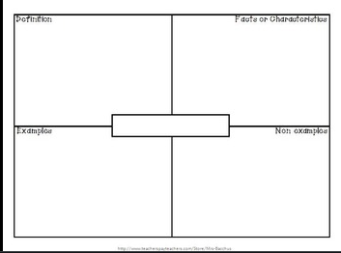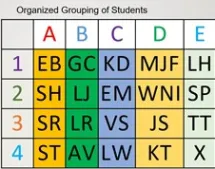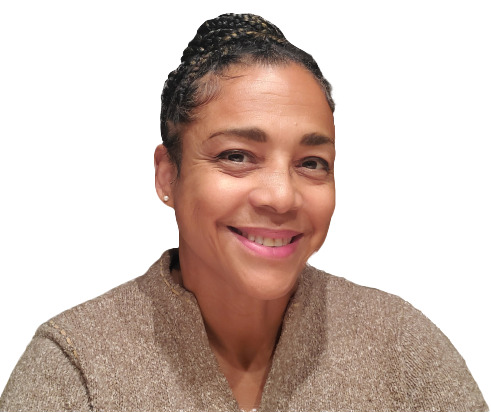3 Strategies to Support EL Language Development in the STEM Classroom
I am sure that at some point in time you have heard or read something along the lines of “We are all literacy teachers when it comes to teaching English learners, regardless of the content area we teach.” Or that “language and content occur simultaneously.” But what does this mean and, more importantly, how does the STEM (science, technology, engineering, and mathematics) teacher teach something that they lack training in?
That is the topic for today’s blog, based on research published in the Journal of STEM Teacher Education (2016) and on the 2018 National Academy of Sciences Report, which I strongly recommend you read. Both articles can be downloaded for free.
Why STEM Teachers?
Research states that by 2025, one in four students in U.S. K–12 schools will be an EL. This can be very intimidating for many teachers but, according to Hoffman and Zollman, seems to be especially daunting to many STEM teachers who, like other content area teachers, have limited training in working with language learners.
The reality is that most, if not all teachers, have or can expect to have ELs in their classroom in the near future, and therefore must be prepared to best support and teach every single one of these children. In many cases, a general education teacher who knows the content and pedagogy to teach the grade-level standards will also need specific knowledge, skills, and training to help ELs access the curricula.
3 Strategies to Support Language Development Among ELs in the STEM Classroom
1. Allow Students Opportunities to Participate in Disciplinary Practices
The science classroom can be particularly beneficial to ELs when their contributions are valued for the merit of their ideas regardless of social status or linguistic accuracy. Students must be allowed opportunities to actively construct their own science understanding and to participate in disciplinary practices regardless of their level of language proficiency.
The NGSS (Next Generation Science Standards) engages students by using “knowledge-in-use,” where students apply their knowledge for a particular purpose. It is important to remember that as ELs begin learning English, their English will be less sophisticated—but this does not imply that they cannot contribute to the class discussion. Language proficiency does not equate to academic ability. As ELs develop deeper and more sophisticated science understanding over time, their language will become more sophisticated, too.
ELs must be provided the opportunity to practice listening, speaking, writing, and reading in a variety of modalities: one to one, small group, peer grouping, whole group, speaking with the teacher, and creating reports. Each modality requires a different set of vocabulary terms and level of language sophistication. When working one on one or in small groups, a student can point to words or objects to help explain what they did or are speaking about. This allows for less specificity in word choice. When presenting to the class or writing reports, vocabulary and word choice becomes more targeted and specific. Keep this in mind when giving assignments to ELs because their level of language proficiency should guide the tasks and the criteria with which you will grade them.
2. Support Students’ Vocabulary-Building Skills
In order for students to learn and retain vocabulary words, we need to place students in situations where they are able to use the vocabulary in context. The more social contexts in which the students find themselves, the quicker and better they will become in using the vocabulary and hence the language.
Stephen Krashen states that if the learning is compelling, the students are more willing to learn it and not even realize that they are learning it in a different language. So, how can vocabulary be compelling?
Using phenomena is one way, and the NGSS is all about phenomena. Let’s say that the vocabulary word is combustion. You have a number of choices of how to teach the vocabulary word. Here are a few examples, some more compelling than others:
- Have the students write the word combustion and its definition on paper. (Definitely not compelling)
- Use a Frayer model, where the students complete a graphic organizer by writing the word in the center, its definition, examples, nonexamples, and perhaps a picture in the boxes provided. (Better, but still not very compelling)
- Conduct a demonstration or show a video of a combustion reaction. (Definitely compelling). Follow this with the students discussing what they noticed and if they have ever seen anything like this on tv or in person (making connections). Then lastly, introduce the vocabulary word. By introducing the vocabulary word last, the students have made connections to the word and developed schema (some background knowledge of the topic) and can associate the word with either previous knowledge or new knowledge in a compelling manner.

Frayer model template example
So, remember, giving a student a vocabulary word and its definition, and/or making them write it multiple times is the least effective strategy. But, making the word compelling and connecting it to previous knowledge (schema) is the best way to get your ELs and all other students to learn and remember vocabulary.
What ways can you use phenomena to teach vocabulary?
3. Increase Interactions Using Different Grouping Strategies for Distinct Purposes
When planning your instruction, you should also plan how you will be grouping your students for different activities. Such preplanning of groups may seem trivial, but it is needed—especially when working with ELs. Each EL has a certain level of proficiency and this is very important when deciding who works with whom in groups.
Every one of your ELs should be included in all activities, especially in collaborative groupings because the best way to learn academic language is by being exposed to it. ELs must be able to hear vocabulary in context and be provided with frequent opportunities to practice it. And there is no better way for this to occur than to have students work in groups that are well thought out.
See the sample chart to the right, which you can easily create for your class. The boxes are filled with each student’s initials. You can organize it any way that you wish. For example, you can use the columns (A–E), as in this example chart, for homogeneous grouping of students, and the rows (1–4) for heterogeneous groupings. Or you can have columns with students with similar language levels and rows with students of different language levels. How you group the students and how many rows or columns in your chart is totally at your discretion. The most important thing is to plan your groups with care!
I would love to hear what strategies you have used to support language development for your ELs. Please share in the comments below.


